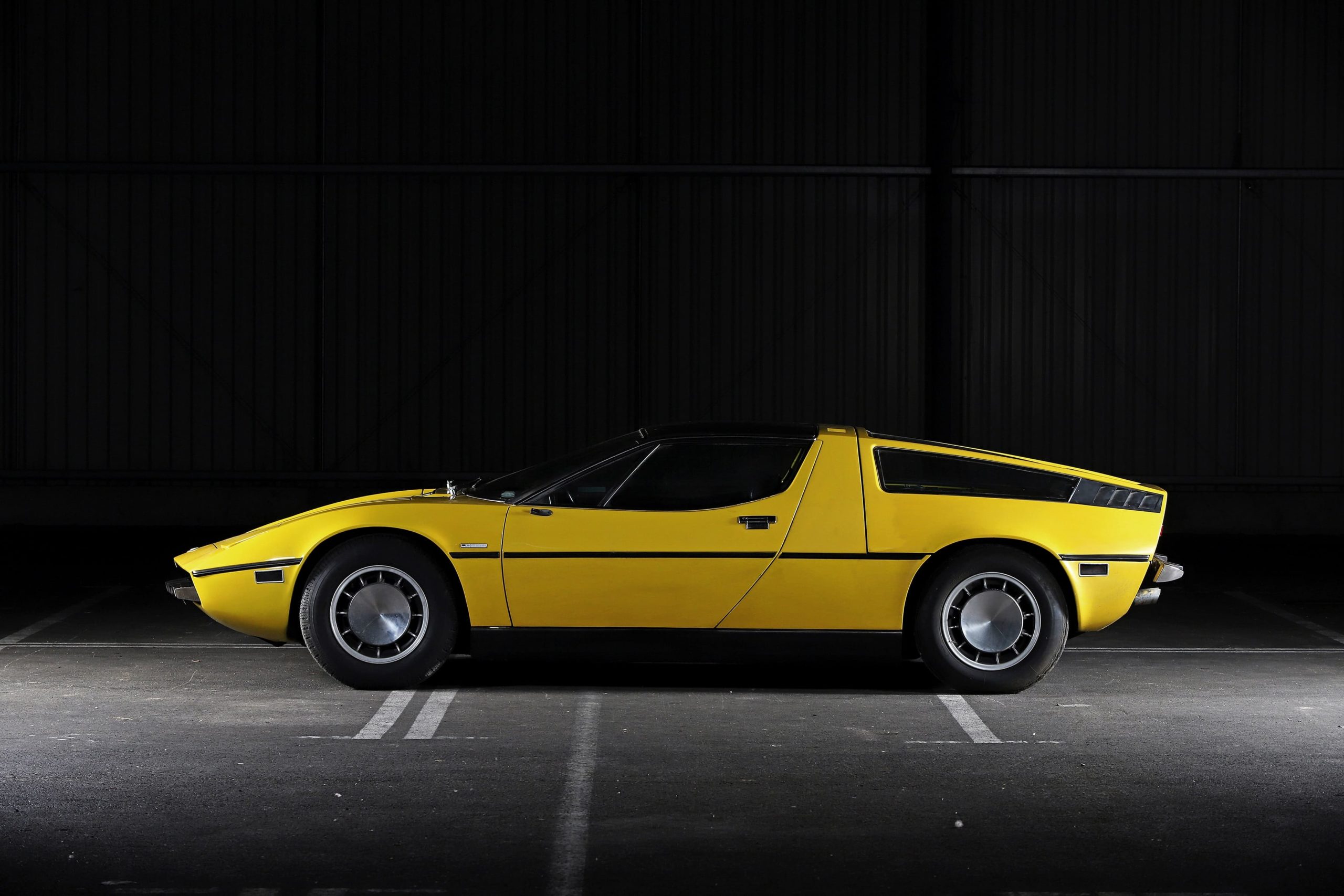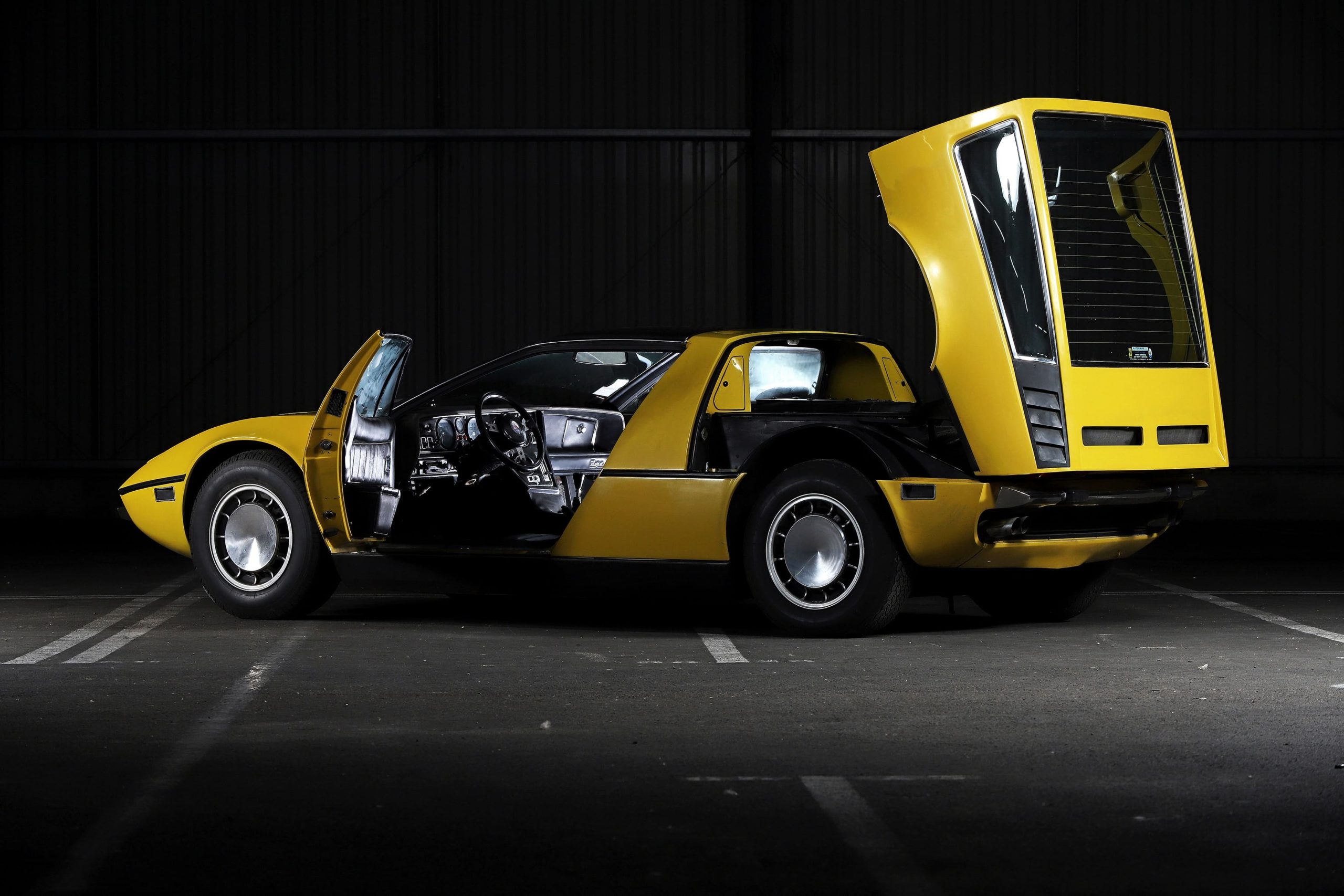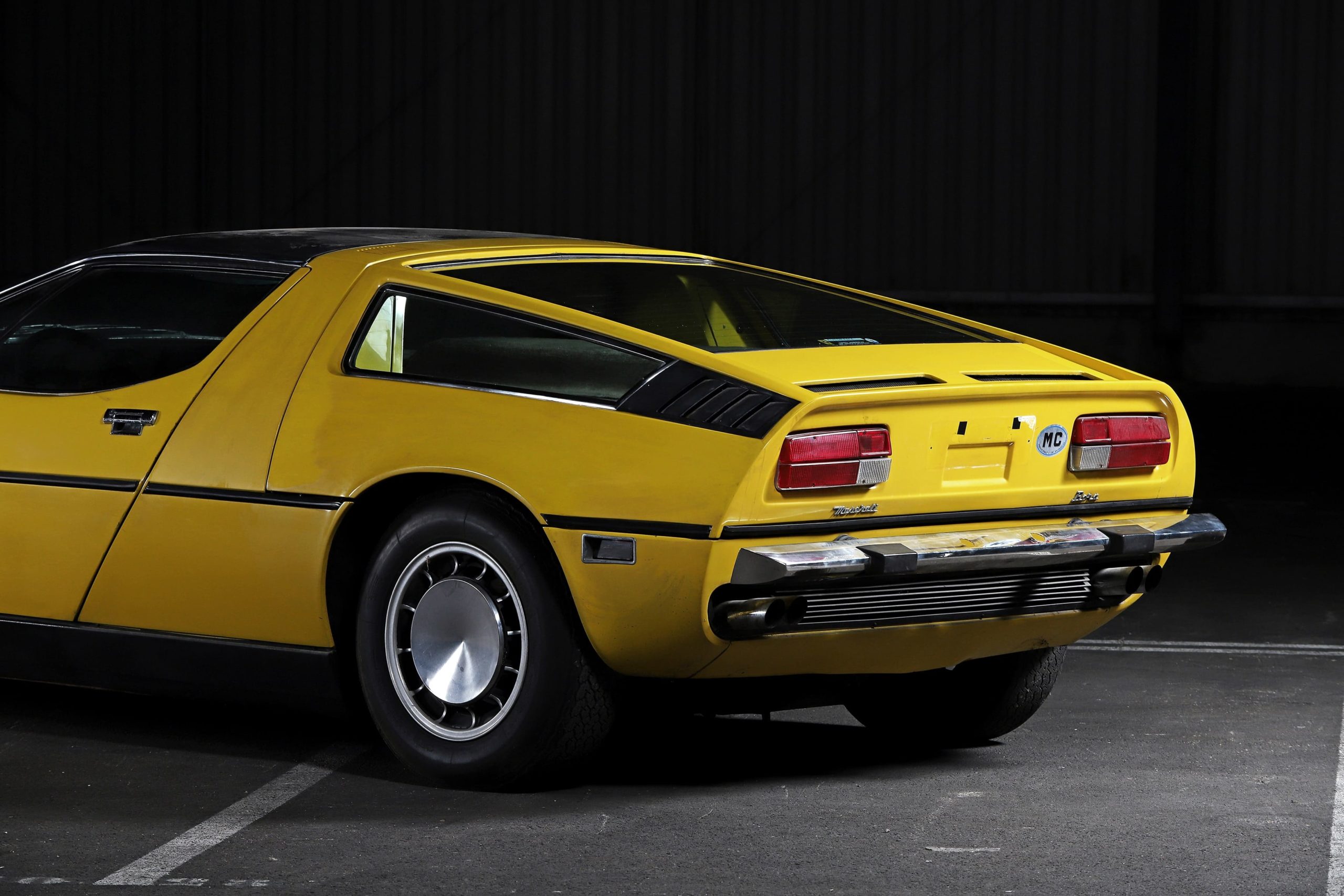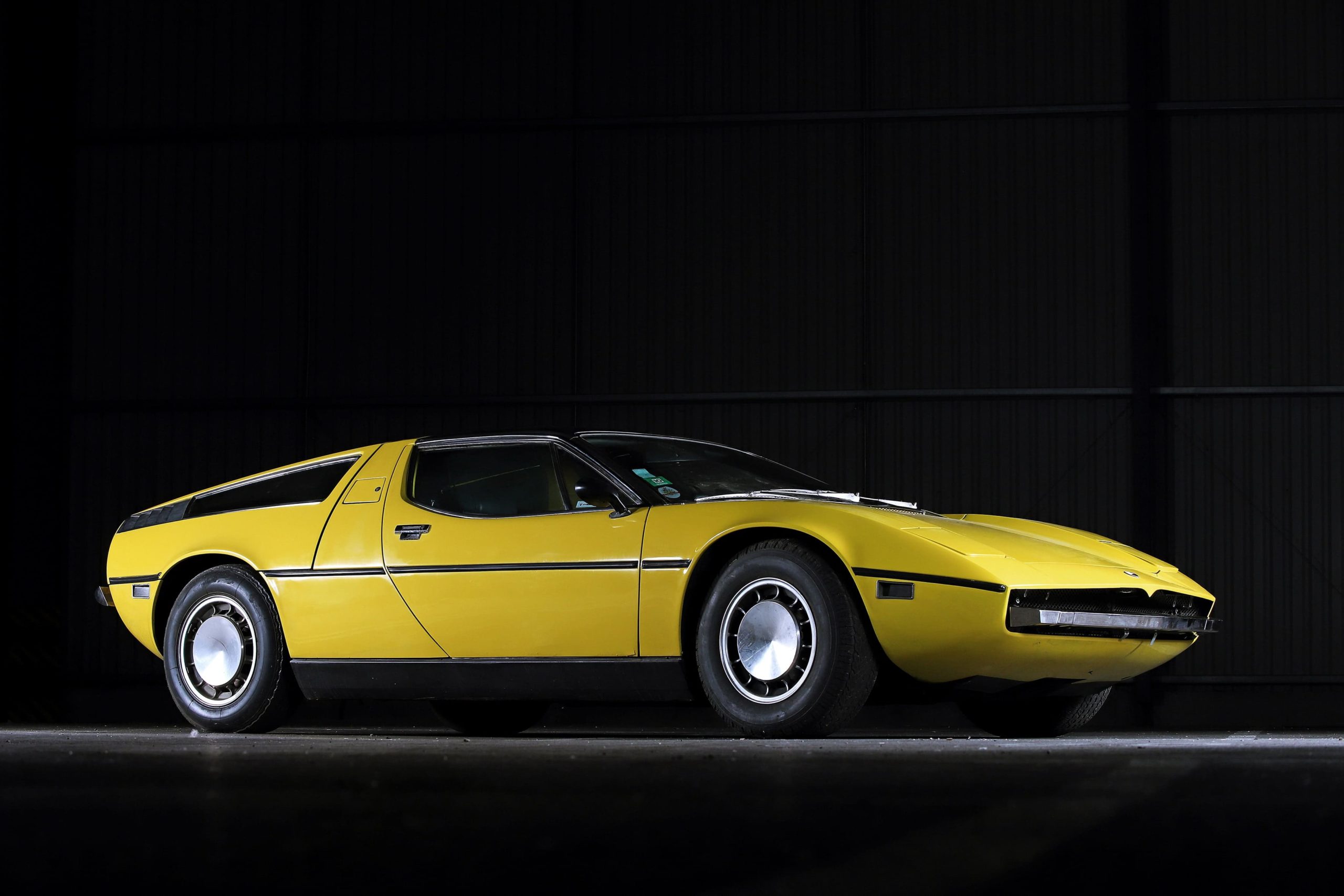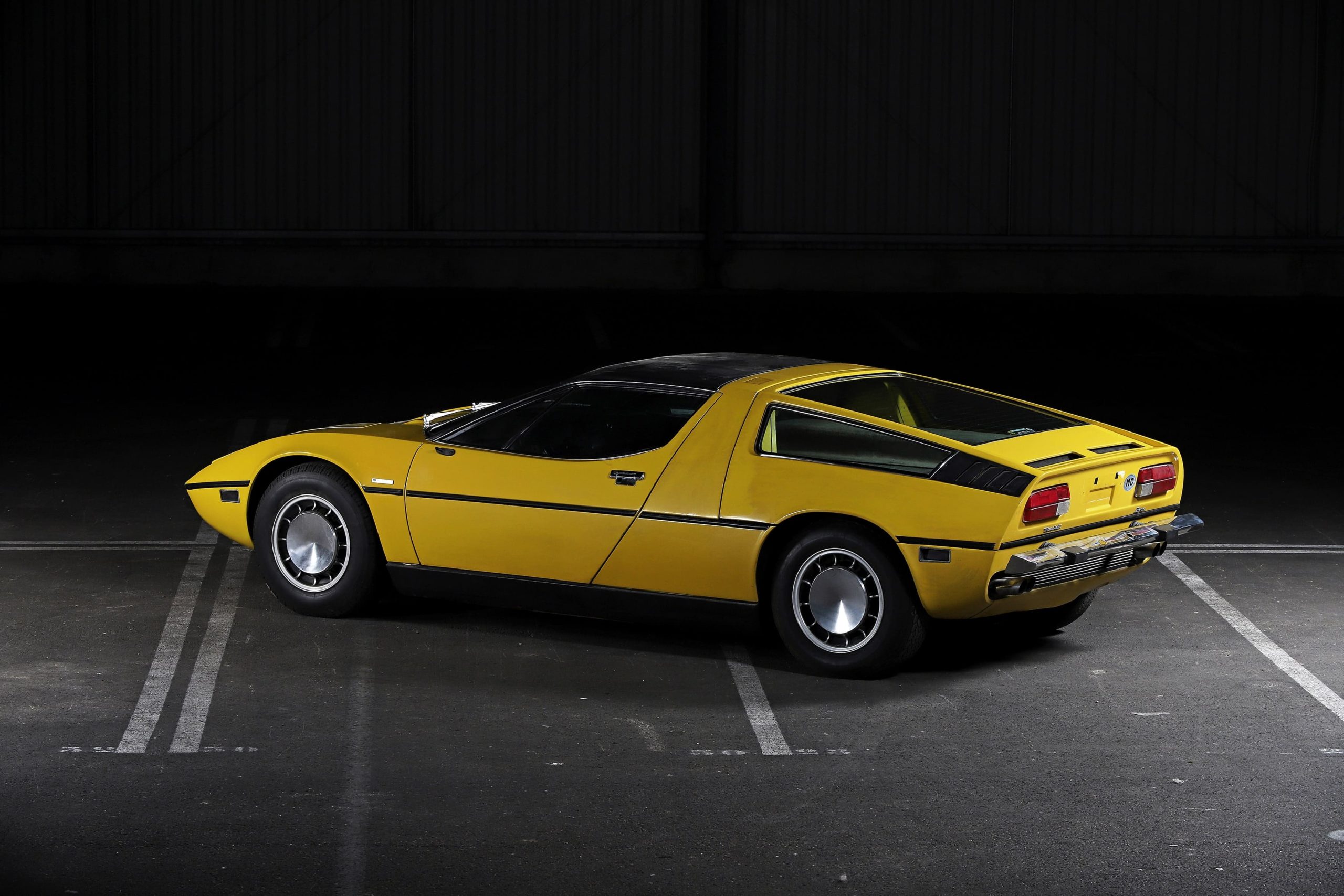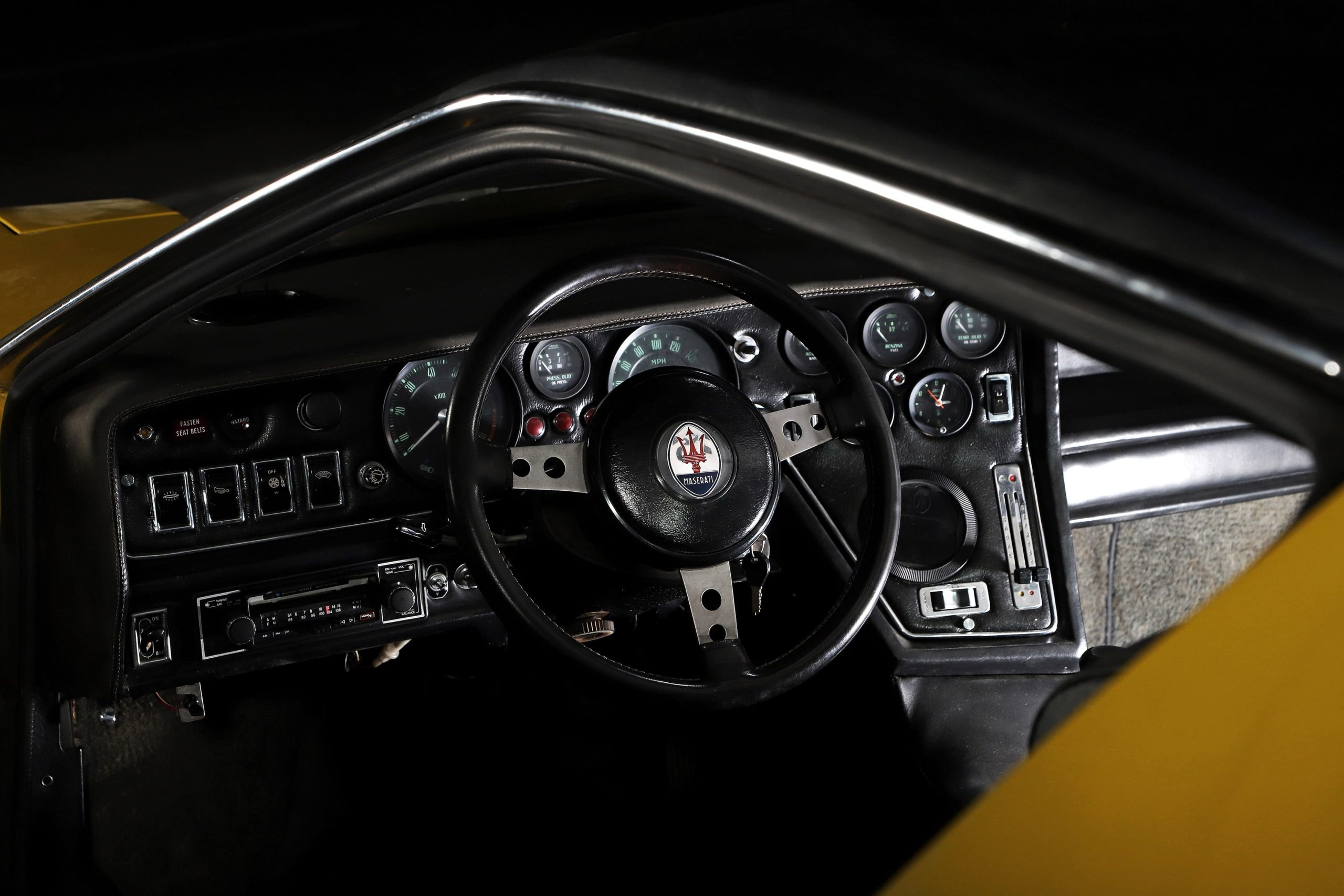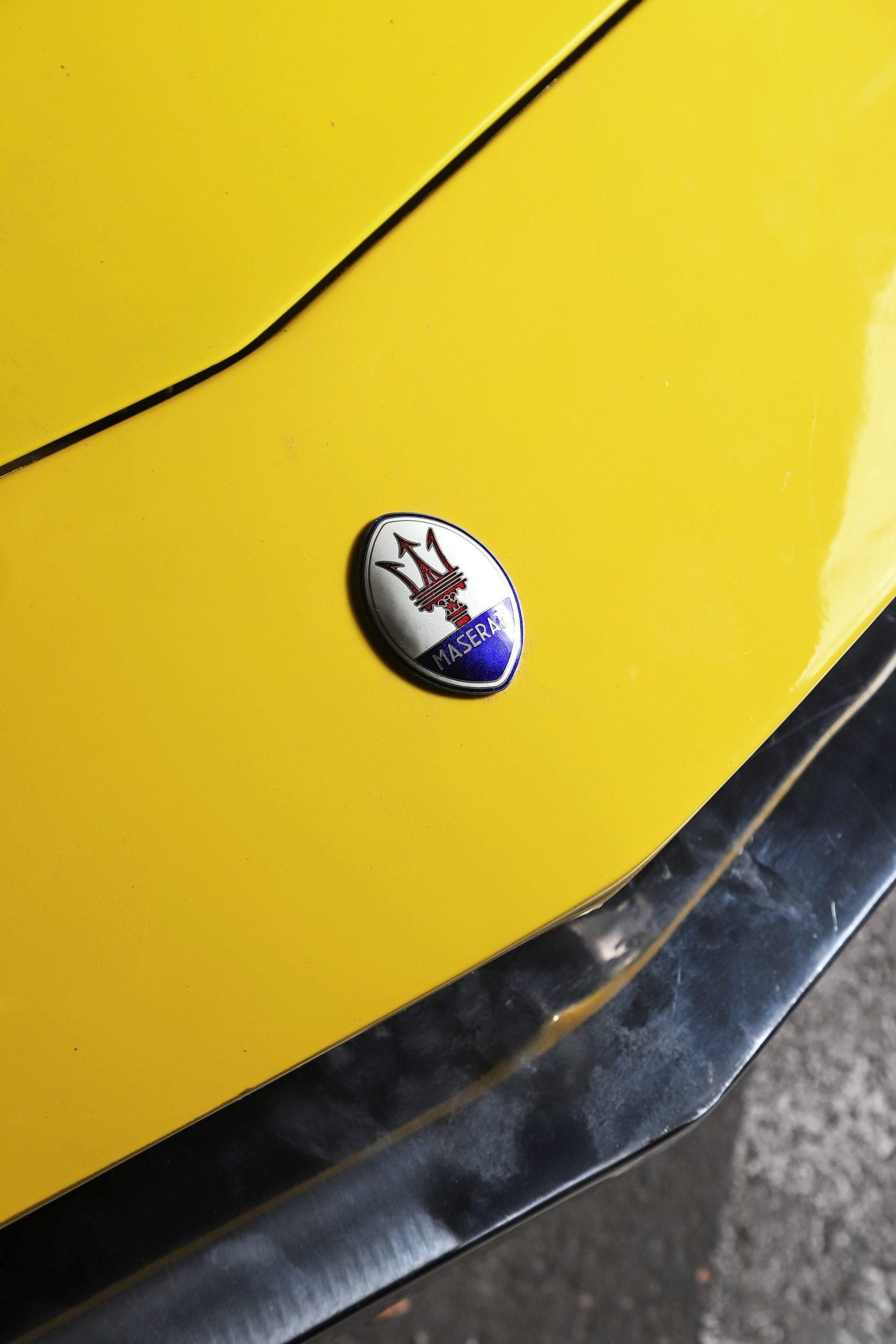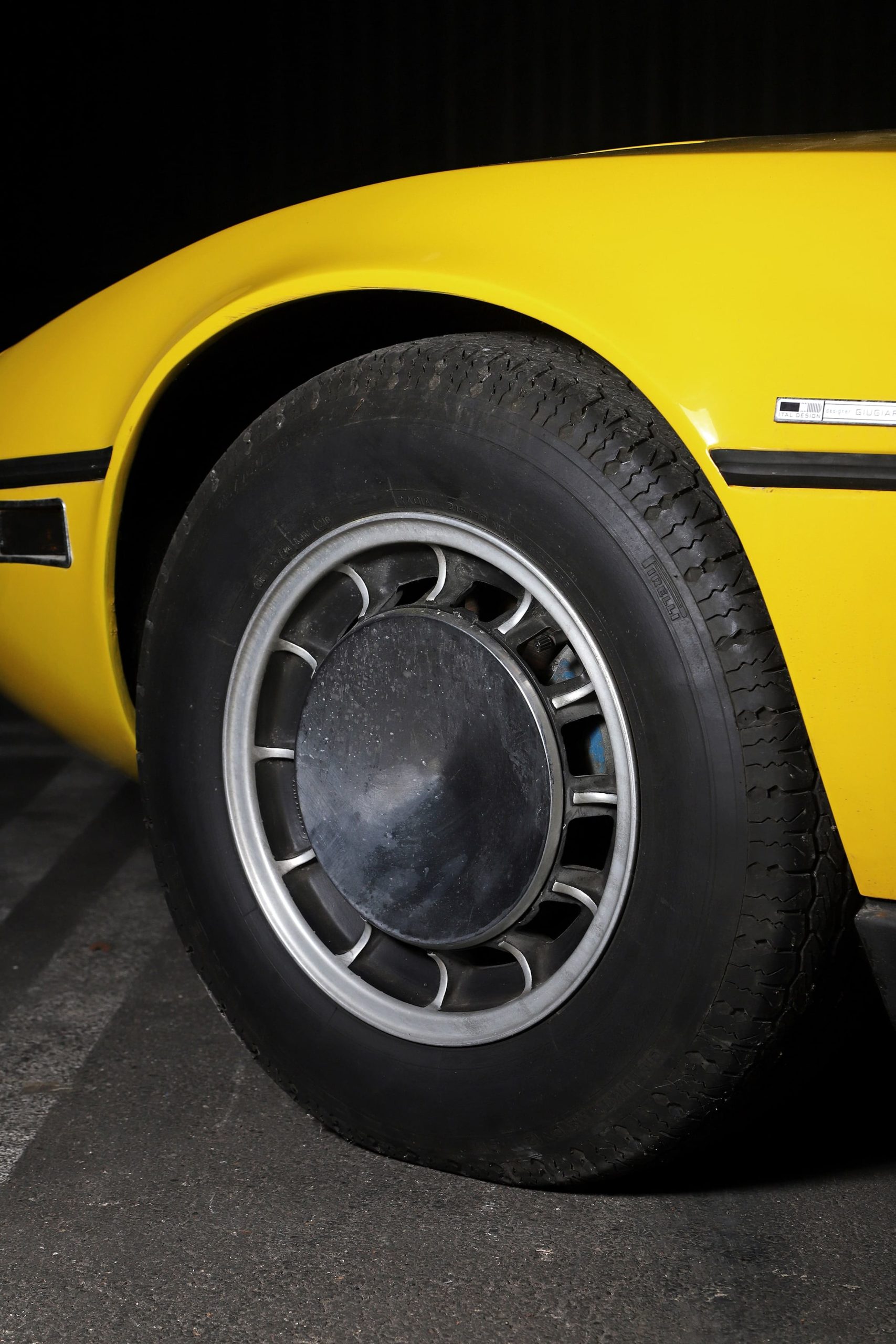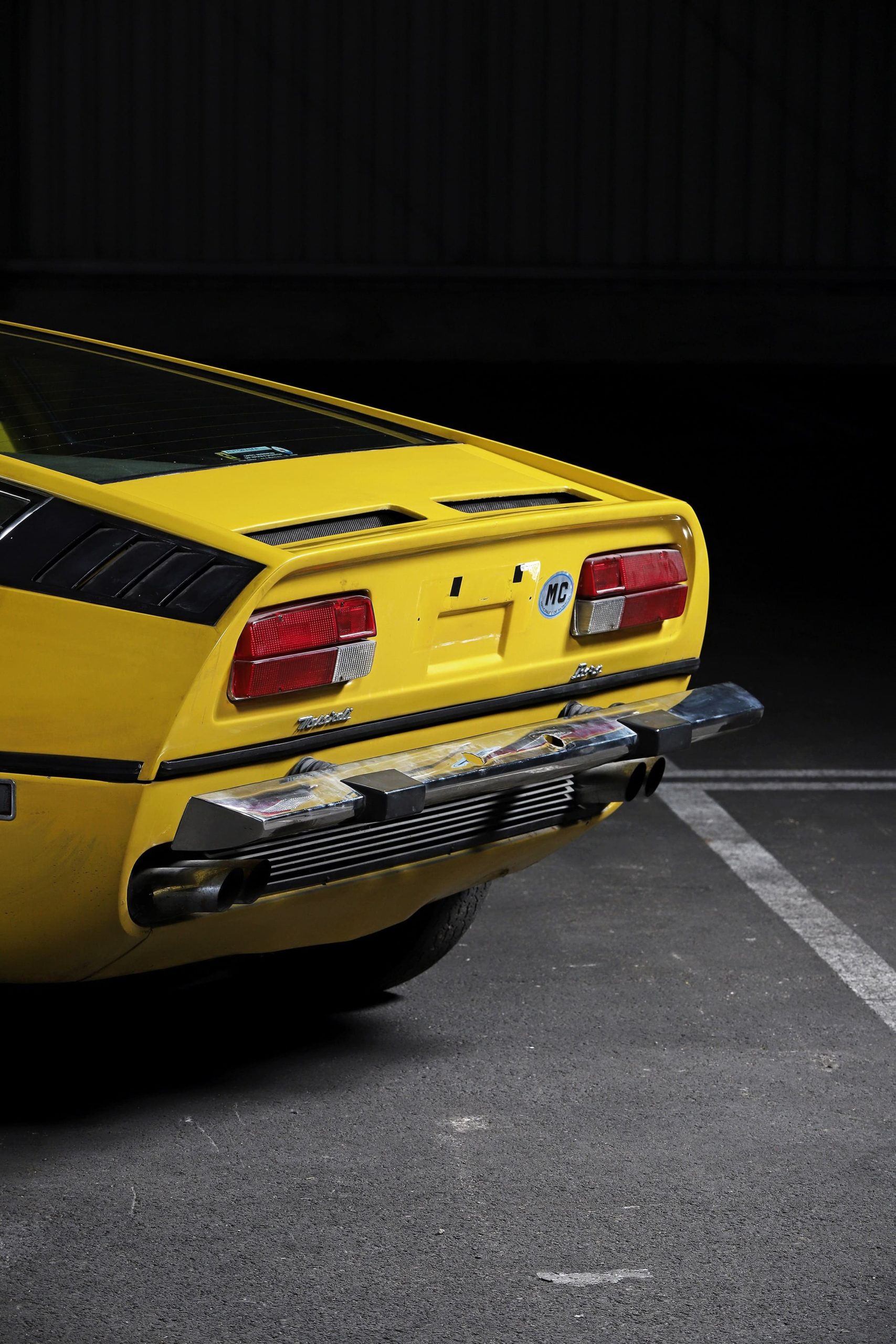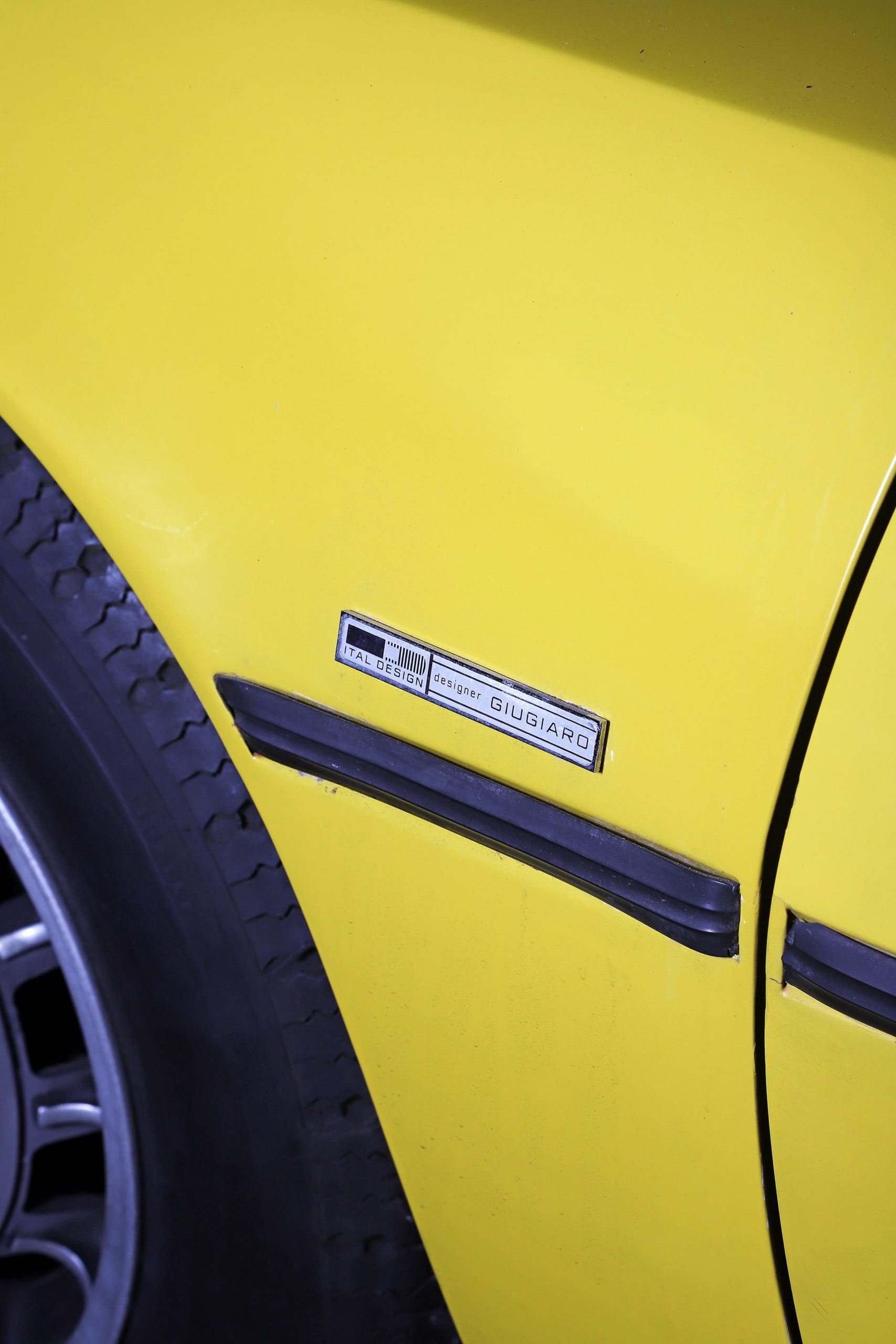Maserati Bora 4.9 - 1973
— Maserati seventies supercar —- Design Futuristic and elegant lines signed by Giorgetto Giugiaro for Ital Design.
- History The first production Maserati powered by a rear mid-engine.
- Feeling A first-class performance car offering an outstanding level of on-board comfort, unseen before in a GT
- Rarity One of only 235 cars equipped with the 4.9 litre engine.
- History A Maserati Bora in spectacular yellow livery, sold new in the USA in 1973, awaiting a full restoration
Named after a wind from the Adriatic Sea, the Maserati Bora celebrated its 50th anniversary this year. The car was a real revolution for Maserati, with its futuristic yet elegant design by Ital Design, its rear mid-mounted V8 engine and its Citroën technological innovations, not to mention its unprecedented comfort for a sports car. Here is a portrait of a car that some consider to be the best GT of its time.
An elegant and futuristic GT
More famous for its racing cars than its sporty GTs, despite the launch of the 3.500 GT in 1958, followed by other GTs, notably the sublime Ghibli, the Bora was a real revolution for Maserati.
The early 70s were also a new era for the Trident brand since Citroën had just bought it in 1968. This was a relief, as Maserati clearly needed new financial funds. It also gave the brand an access to Citroën’s numerous technological innovations.
The specifications for the Bora were very concise and aimed above all at competing with the star of the times, the Lamborghini Miura.
The development of the Bora was entrusted to the engineer Giulio Alfieri, renowned for having designed the sublime and highly competitive Maserati 250F. In 1969, Alfieri approached the young Ital-design studio created by Giorgetto Giugiaro and asked them to work on a project that clearly had to be a proper Maserati, modern but not overly extravagant, sporty but not too aggressive, and innovative without being revolutionary. Giugiaro reacted quickly and the car, called Tipo 117 Bora internally, was launched at the Geneva Motor Show in March 1971. It was a massive success; the Bora was the undisputed star of the show.
The Bora first stood out for its futuristic design, with its streamlined, aerodynamic lines, which ended with a huge bubble at the rear. Some truly distinctive design features punctuated them, such as the Cromadora alloy wheels with their concave polished steel wheel covers, the retractable headlights and the brushed stainless steel roof and windscreen pillars, whose raw appearance stood out from the rest of the car.
Another revolutionary element for a production Maserati was the architecture of the engine placed in a middle rear position. On the opposite, the splendid engine block was a well-known face internally, as it was directly derived from the legendary 450S racing car engine.
Giugiaro admitted that the Bora “was a real provocation when it was born”.
©Aguttes
State-of-the-art technology
Without doubt, the heart of the Bora was its engine, the superb and proven 4,719cc 16-valve aluminium V8 inherited from the 450S and already used in the Maserati Ghibli.
It had four overhead camshafts, a 5-bearing crankshaft, short-stroke pistons, and a hemispherical cylinder head fed by four Weber twin-barrel carburettors. It delivered 310 hp.
Last, the 5-speed ZF transaxle gearbox allowed a speed of 280 km/h.
The combined steel monocoque chassis and bodywork manufactured in Modena by the Padane Company had a tubular steel sub-frame at the rear for both the engine and the transmission.
The Bora also had four-wheel independent suspension, again a first for a Maserati road car, with coil springs, telescopic suspension dampers and anti-roll bars… As for the brakes, they were ventilated disc brakes.
The major evolution of the Bora came with the launch of an even more powerful version, the 4.9 litre, 4,930 cc V8 with 330 bhp. This engine was originally launched in 1973 for the US market, as the 4.7 litre engine could not be homologated there. In 1976 it was used with some modifications in European models.
Maserati produced a total of 314 4.7-litre and 245 4.9-litre Bora models until 1979.
©Aguttes
An extremely powerful and comfortable GT
The Bora’s level of performance and efficiency backed up by a safe handling made it a strong competitor to the stars of the times, especially the Ferrari 512 BB, de Tomaso Pantera and Lamborghini Miura.
Its handling was considered more consistent, but what really set the Bora apart from other GTs was its on-board comfort, which was unheard of for a GT car:
– With dual-pane glass separating the cockpit from the engine bay, and a carpeted engine compartment to reduce engine noise, the Bora made a point for all those who wished to drive her on long journeys, which, in theory is what a GT car was supposed to be about,
– Similarly, the Bora had a truly large boot on its front, a rare feature for a mid-engined supercar, yet an essential one for those wishing to go on a long weekend,
– Naturally, like its direct competitors, the Bora offered a beautiful interior with leather bucket seats and alcantara,
– Finally, it benefited from Citroën’s innovations, which considerably improved comfort on board.
Indeed, as it had direct links with its parent company, Citroën, the Bora inherited some interesting technological innovations.
In particular, the hydro-pneumatic control system supplied by Citroën not only operated the excellent ventilated disc brakes, but was also use to adjust the pedals, the position of the driver’s seat, the steering wheel, the retractable headlights and the windows.
Unfortunately, the Bora suffered reliability problems that somewhat marred its career.
Citroën also launched another sports car, the Maserati Merak. This popular small GT was developed on the basis of the Bora, it even shared the same front end. A smaller engine, the V6 of the SM, powered the Merak.
The 4.9l Bora from the ANNA LISA Collection
The car in our collection is one of the 245 cars produced with the 4.9l engine. It was exported new to California to Maserati’s local importer in May 1973. It changed hands on the 20th of April 1982, with 23,000 miles on the clock, and was then acquired by a Massachusetts resident named Curtis Nordgreeen.
The car then changed hands on June 1, 1989 (with 38,327 miles on the clock) and was sold a few months later on December 8, 1989 at an auction in Paris. The car was then registered in Monaco before joining our collection. It is now in sound condition but needs to be fully restored
